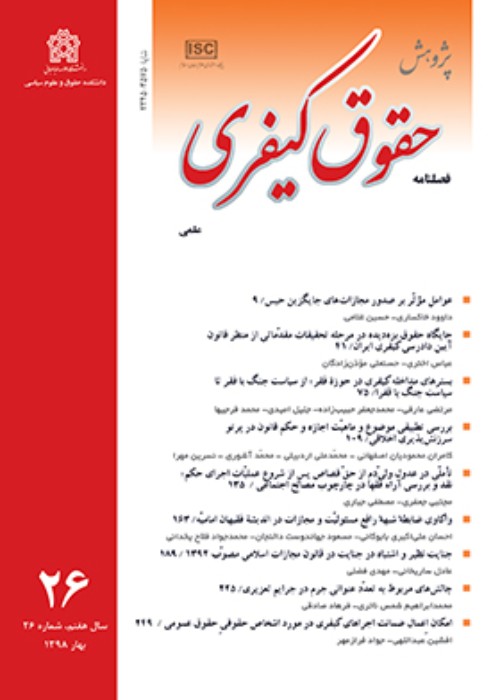Media Representation of Hacker as an Edge worker: Toward a Cultural Criminological Analysis of Blue Whale Series
This study places itself within the scope of cultural criminology approach, a multidisciplinary research field that explores crime and reactions to its control from an anarchist view. Cultural criminology places the issues of meaning in the hearts of its studies. Cultural criminologists propose that both crime and its control operate as cultural processes. In this theoretical approach, crime and its control are conceptualized as creative cultural products which are changing in the dynamics of social interactions. It examines how the meaning of crime and its control is continuously constructed in the nonlinear cultural, criminal, and crime control processes. It focuses on the convergence of criminal subcultures, control agents and media processes. For cultural criminologists, the media-based images of crime are one of the main sources of mediated constructions of meaning. They emphasize the centrality of media representations in the construction of crime. In this regard, it chooses an interdisciplinary approach with sociological criminology, cultural studies and media Criminology.This study sought to analyze the media-constructed lived experience of Iranian hackers by using the theoretical approach of cultural criminology. Cultural criminologists draw attention, particularly mainstream variants of criminology, to the fact that the crime control agencies are not the only creators of the meaning of crime and its control. Proposing the idea of commodification and hall of mirrors, they argue that the media representations of criminals and criminal events become a tool for creating the meaning of crime. These images create and consume by criminals, criminal subcultures and control agents. In today's highly controlled world which subcultures become marginalized, media representations become significant, exceptional sources for creating deviant subcultural reality. These images are continuously recycling and reproducing by control agents and subcultures and even other media images. Hence, we are being surrounded in a world in which saturated by different, nonhomogeneous images of crime and its control.This research is accomplished via anarchist methodology of cultural criminology. To this end, we have used the ethnographic content analysis ( ECA ) developed by David Altheide (1980s) and virtual ethnography of hacker subculture. Due to the qualitative nature of the research, the Blue Whale television series were analyzed by using the purposive sampling method. Researches conducted in this area must focus not only on the everyday media images, but also on the complex set of reciprocal and interdependent subcultural relationships which together constitute the dynamic meaning of crime. In this regard, in the subcultural studies section, fifty-four in-depth, semi-structured interviews were conducted with hackers during the six months, and their behaviors were simply observed. All data were coded and analyzed using MAXQDA software.Our findings indicated that the meaning of the hacking is also created through the consumption of media products. Entertainment media can represent the real dimensions of criminal subcultures in the form of attractive media products. In many ways, Blue Whale blend the real-life and movie created footage and blurs the lines between reality and fantasy. The hacker represents a personality similar to many young people, which can evoke audience emotion. According to our virtual ethnography research, some hackers are students or graduates of various fields, especially computers, who suffer from economic problems like the character of the hacker shown in this series. They are humiliated by powerful adults and at the same time, have a creative mind. The fictional hacker of this film, like many hackers in the real world, feels prosperous and empowered by taking risks as part of edgework activities. The combination of skill, creative impulsive behavior, and economic problems lead the hacker to greater ambitions in the criminal profession, and finally, the metaphorical incident of the death of the whale occurs. Moreover, the Blue Whale provides information about the lesser-known dimensions of criminal edge workers that the criminal justice system seeks to distort to prevent delinquency. It also found that by representing parts of the realities of hackers' lived experiences and looping back to the content and form of previous media loops, the series screening a dystopia that provides the possibility of transcending established norms and rules of the life for the offender and the audience.
- حق عضویت دریافتی صرف حمایت از نشریات عضو و نگهداری، تکمیل و توسعه مگیران میشود.
- پرداخت حق اشتراک و دانلود مقالات اجازه بازنشر آن در سایر رسانههای چاپی و دیجیتال را به کاربر نمیدهد.


